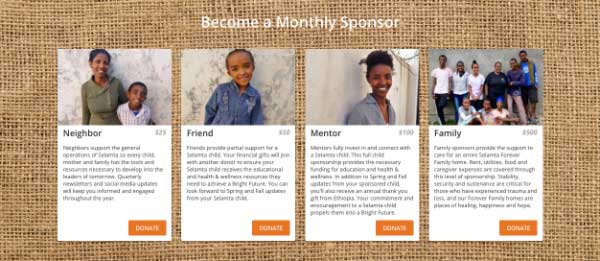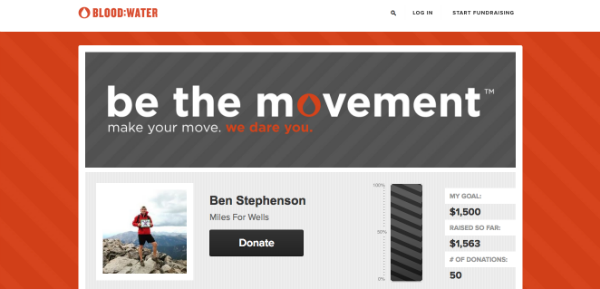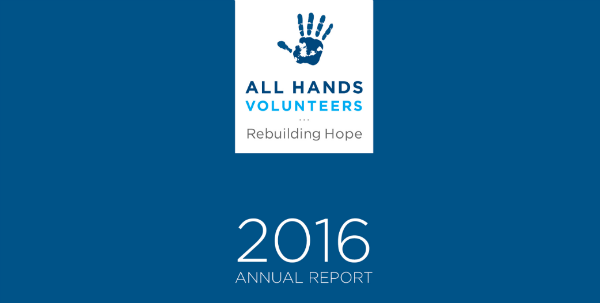Fundraising Tactics Remade for the 21st Century

Sometimes it seems like the world moves so quickly that old strategies and rules of thumb no longer apply. Even the historically cautious nonprofit sector has evolved to use new technology and modern donor engagement and fundraising strategies.
In reality, though, these seemingly new ideas and best practices are often just reincarnations of the old. With this lens, it’s often easier to adapt and refine your approach.
Here are four long-standing nonprofit fundraising strategies and their more modern counterparts. Try these adaptations out yourself to help engage and mobilize your community.
1. Jog-A-Thon
Endurance events have been a big part of nonprofit fundraising for decades. Traditionally, participants collect donations leading up to the event or recruit sponsors to give a set amount for every mile they complete. While this type of fundraising is a good way to reach beyond your nonprofit’s existing network, it can also be a complicated process. When your supporters need to juggle pledges, checks, and cash, it can lead to delayed or missed donations. It also places extra responsibility and stress on your fundraisers.
New Strategy: Online Peer-to-Peer Fundraising for Events
Blood: Water‘s supporters use online peer-to-peer pages to fundraise for the cause.
Endurance events are still very important to fundraising, but now the process can take place largely online. Participants can create a page in minutes and use social media and email to appeal for donations.
This is easier for the fundraiser, the donor, and the organization. The fundraiser can track their progress and tell their story, the donor can quickly contribute, and the organization receives funds directly. The nonprofit also gains contact information from all its new donors.
Advantages
- Instant donations provided directly to the organization.
- No geographical constraints. Fundraisers can appeal to friends and family near and far.
- The organization can use collected contact information to reengage third party donors.
2. Sponsor a Child
A proven strategy to motivate donors to give is to present them with a single person impacted by your cause. Some organizations use this technique to create “sponsor a child” programs. Donors give a set amount each month dedicated to an individual in need. The donor often receives periodic updates in the form of letters, stories, or interviews.
These programs can be labor-intensive for both the nonprofit and donor when they’re not run online. Supporters have to mail a check each month and organizations need to process these individual donations. The nonprofit also has to produce, print, and mail each update.
New Strategy: Automated Recurring Gifts

Selamta Family Project uses Classy’s Impact Levels to illustrate monthly gifts.
Online, organizations can still feature individuals and match them with donors, but the process of monthly giving becomes less time-consuming. Donors enter their payment information once and the nonprofit receives the funds automatically each month.
Nonprofits can also dedicate recurring giving payments to sponsor a specific program or project. Regardless of what the funds support, updates can be made to the donor via email in the form of impact stories, pictures, or even videos.
Advantages
- Automated donations mean no missed or late payments.
- Email is a cheaper and faster alternative to direct mail updates.
- Organizations can send pictures and updates any time.
Organizations constantly work to make donors feel included, important, and satisfied. To this end, many organizations send small tokens of appreciation in exchange for a donation. Some common donor premiums are tote bags, coffee mugs, and license plate covers.
The trouble is that many donors would rather all of their donation go to the cause. And some of them may not even want to use the “thank you” item you send them. While custom questions on donation forms can be used to allow donors to opt in or out of these gifts, many organizations still want to acknowledge donors in some fashion.
New Strategy: Online Updates and Revenue-Generating Merchandise
Merchandise from To Write Love On Her Arms.
Donor premiums and branded merchandise still have a place in the social sector, but now they can work in tandem with more frequent impact stories and updates. In fact, many recurring giving programs offer exclusive updates and content to monthly supporters as a way to acknowledge their support. The gift to these donors is the ability to see how their donations make a difference.
Merchandise can still be a way for your community to show their support, but great design is what will get people to purchase your products and wear them with pride. Your T-shirts and merchandise may even join the rank of fashionable brands like To Write Love On Her Arms and the Human Rights Campaign.
Be transparent with your supporters and let them know what portion of their purchase goes to your cause. You can also emphasize how using your merchandise raises brand awareness and helps you grow.
Advantages
- No merchandise wasted on people who don’t want it.
- Eliminated waste saves money on manufacturing and shipping.
- Donors feel involved and a part of your work.
4. Direct Mail Annual Report
Donors want updates and they want to see how their support is making a difference. They also want organizations to be transparent.
In the past organizations would typically print and mail an annual (or biannual or quarterly) report to their community in review of their performance. This is a time-intensive and costly practice.
New Strategy: Interactive Online Reports
All Hands Volunteers created a full online annual report.
With online reports, in the form of videos, webpages, or PDFs, organizations can get as detailed and colorful as they want, without worrying about printing costs. Donors can easily navigate the reports and see updates at their convenience.
While you can continue to send printed reports to donors that might prefer them, online reports are likely to be embraced by a large part of your community. Consider giving them options—let supporters choose what kind of report they receive when they make a gift.
Advantages
- Organizations can edit and update online reports anytime.
- No wasted paper and reduced printing and shipping costs.
- If your report is available on your website, it can show potential supporters how donations make a difference.
The nonprofit sector has many longstanding fundraising strategies that are still effective today. But new technology and best practices have pushed them to be more efficient, personalized, and convenient. And when you consider how today’s fundraising strategies relate to past efforts, it’s easier to realize you’re not starting from scratch, you’re evolving.

The Nonprofit Growth Guide
Subscribe to the Classy Blog
Get the latest fundraising tips, trends, and ideas in your inbox.
Thank you for subscribing
You signed up for emails from Classy
Request a demo
Learn how top nonprofits use Classy to power their fundraising.






